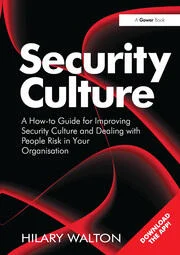Solutions: Set-back Then Sit Back

(Back) For existing and new construction, design in set-backs to provide greater security, especially in terms of guarding against loss of life. There are additional security features built-in and even hidden in the perimeter around a facility. In one example, hedgerows that line the building’s walkways and three sides of the perimeter conceal a series of steel and concrete-filled bollards, or posts. Concrete sitting benches alongside reinforced concrete planters filled with innocuous-looking flowers and decorative, lighted bollards that appear to be upscale lampposts prevent vehicles from gaining access to the lawn and building.
The 1995 bombing of the Alfred P. Murrah Federal Building in Okalahoma City and the subsequent attacks on September 11th served as a wakeup call that tighter care should be taken to shore up facilities.
What’s been set as requirements and learned by doing also are lessons for enterprise security tasked to protect buildings in the U.S. and abroad.
Beginning in 2003, the Department of Defense charged that all defense projects must meet or exceed anti-terrorism force protection regulations set by Unified Facilities Criteria (UFC) 4-010-01 DoD Minimum Anti-Terrorism Standards for Buildings. New regulations apply completely to new construction. If renovating, restoring, repairing or modifying, and project cost exceeds 50 percent replacement cost of the building, the standard requires that the remainder of the building be brought into compliance. If the renovation is less than 50 percent, it is recommended, though not required, that the new measures be incorporated.

(Front)
The goal of UFC 4-010-01 is to prevent mass casualties. The intent is not to protect buildings or classified government intelligence -- first and foremost, it is to protect lives.
Following are key strategies in designing site and perimeter security that not only diminish staff vulnerability, but also maintain aesthetic appeal, all while permitting accessibility to employees and the public alike.

(Inside Left)
Set-back distance
The top three strategies can be summed up in this way: Set-back. Set-back. Set-back.The strategy to overcome a bomber like Timothy McVeigh to drive up, abandon his truck and detonate 4,800 pounds of fertilizer and fuel-based explosives within a few feet of a building is simple, cheap and extremely effective.
It’s a set-back. UFC DoD 4-010-01 mandates that a facility within a controlled perimeter, i.e. with vehicle access control at the entrance, and used as a “primary gathering building” (defined as that which houses 50 or more people), must have a minimum set-back of 25 meters from roadways and parking lots. Most installations are within a controlled perimeter. Because a manned guard station at a controlled perimeter allows searches of all entering vehicles, set-back standards can afford to be less rigid. In contrast, a similar facility outside a controlled perimeter is required to have a minimum set-back of nearly twice (45 meters) that specification.
Set-back distances include vehicle approaches from public roadways, interior roads, parking lots and drop-off points. Generally, the desire is to limit parking; today, parking under a building is generally prohibited. Drop-off areas for places such as medical facilities, childcare and schools are necessary, but the rule of thumb for drop-offs is to incorporate, yet control it. This means clearly delineated signage and pavement markings to indicate to drivers how they are permitted to approach and loop around for egress -- all under close observation.
Even if ideal set-backs are met, other security strategies typically are integrated, as well. Further, where minimum set-backs are not able to be met, set-back limitations can be offset with carefully calculated engineering strategies. For example, exterior walls can be reinforced to be made more resistant to blasts. Equip windows with laminated glazing to prevent flying glass shards and debris. Better secure door and window frames in the wall construction to prevent collapse or release in the event of a blast.
Set-backs also require a 10-meter unobstructed zone surrounding the building. This helps eliminate hiding places, such as an electrical and mechanical equipment or a trash dumpster, in which to place a bomb.
Several years ago, the existing Army reservist training facilities at Fort Meade reached its capacity. While a new facility was needed, space constraints required that the new Army Reservist Training Complex be placed just outside the confines of Fort Meade’s controlled perimeter. Spread over several acres, the 1,800-person reserve center, once completed, will serve as an enclave for army reserve, and requires the same DoD perimeter security requirements. Just south of Baltimore, the complex is bordered by Maryland Route 175, a busy public arterial highway.

(Inside Right)
Concealed devices
A major challenge is to design facilities that are highly secure yet do not feel like a maximum-security prison. The headquarters of the Army’s 101st Airborne Division at Fort Campbell is a contemporary, one-of-a-kind design that provides the tightest security measures but also makes these measures transparent in an aesthetically pleasing structure and park-like grounds.Prominently placed on a grassy knoll near the main entrance, the V-shaped, two-level natural brick structure is formed in the shape of an eagle with an outdoor courtyard tucked between the wings. Visitors can walk its wide, meandering pathways lined with rows of manicured hedges that curve throughout the grounds and accommodate pedestrians and handicapped access from the parking areas. The grounds also feature a sloping landscaped area with ornamental flowering trees, perennial flowers and an expansive lawn, as well as military memorials and statuary, including an eagle fountain.
But camouflaged below the surface of this bucolic setting are techniques planned by the project’s engineering team. These include hidden bollards, drainage layout, natural barriers and even well-placed flower planters.
On one side, the perimeter is delineated with retaining walls, ranging in height from 3 to 7 feet. Pretty hedgerows that line the walkways and three sides of the perimeter conceal a series of steel and concrete-filled bollards, or posts with a stranded chain cable barrier system. Concrete sitting benches alongside reinforced concrete planters filled with innocuous-looking flowers and decorative, lighted bollards that appear to be upscale lampposts prevent vehicles from gaining access to the lawn and building. Larger trees and bushes along the access points help form a natural looking barrier, as well as use of higher than usual, non-mountable curb sections.

(Left)
Natural abilities
Contours in the grade also contribute to higher-level protection. Steep inclines, landscaping berms or dips in the grade offer site security and appear as natural elements. Fort Campbell incorporates a storm-water retention basin with a pitch steep enough to preclude truck access even when not filled with water.Extra care must be taken to keep loading areas secure. For deliveries, service entry drives are equipped with an identification card reader. Should the threat heighten, it also provided with a crash-rated barrier arm gate and/or emergency hydraulic popup bollards that form a crash barrier.
New requirements also mandate that mailrooms be placed on the perimeter of the building. As an area where incoming and unknown parcels enter the facility and are sorted and distributed, segregating it from heavily populated areas can lessen collateral damage caused by an explosive device. Another requirement is to seal off the mailroom, isolating it from airborne contaminants, to minimize the effects of biological and chemical weapons.
Following strategies for enhancing security of both the perimeter and the building site will result in new and retrofit installations that will prove more secure than pre-9/11 design and, most critically, will prevent unnecessary loss of life.
Looking for a reprint of this article?
From high-res PDFs to custom plaques, order your copy today!





